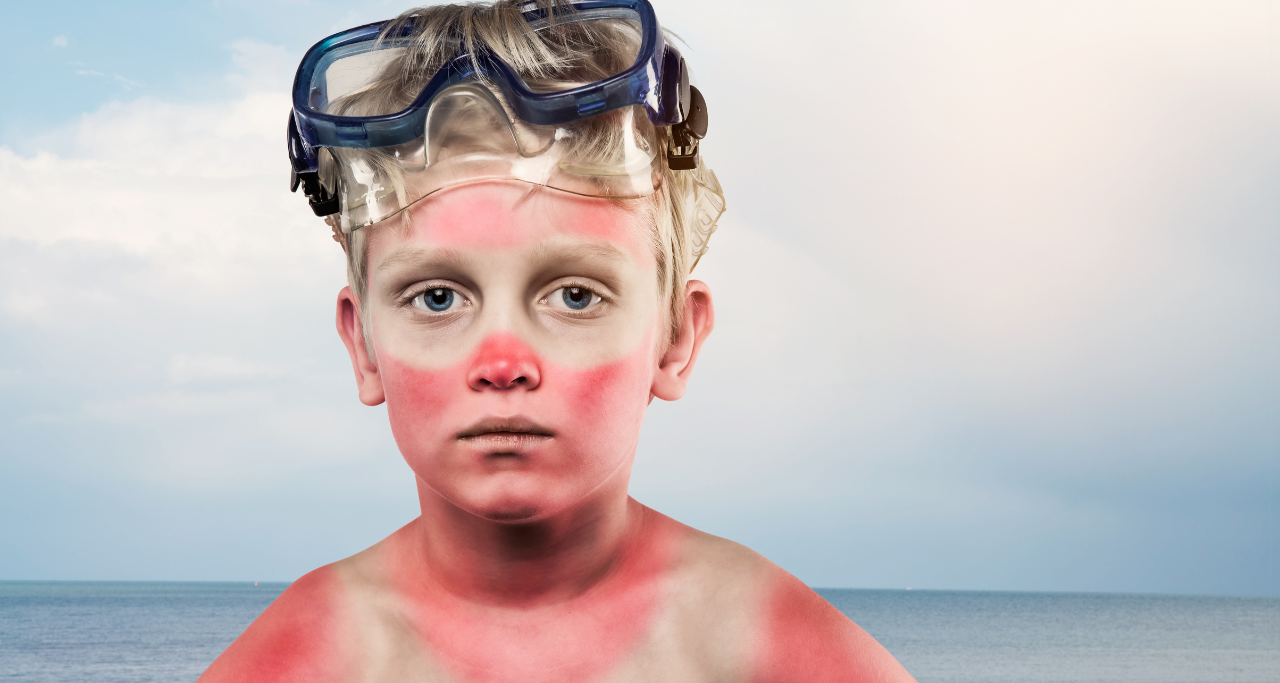Treating sunburn: Home remedies, tips & protection
Lobster red instead of summer glow? Then you've clearly overdone the sunbathing and sunburn has arrived. We show you how to give your skin quick relief now: with tips on treatment, information on the possible long-term effects of excessive UV radiation and an overview of the differences between sunburn, heatstroke and sunstroke. We also explain the three degrees of burns - so that you can recognize in good time when medical help is needed in an emergency.

Recognizing sunburn: Symptoms & degrees of severity
Too much sun and your skin is glowing red again. Triggered by too much UV radiation, the body dilates the blood vessels and stimulates blood circulation, resulting in the reddish discoloration. The more intense and longer the sun exposure, the stronger the inflammatory reaction of the skin is known to be. When considering the appropriate treatment, the severity of the sunburn must first be identified. Depending on how severe the inflammatory reaction is, the measures range from conventional aids to medical treatment.
Types of sunburn:
- 1st degree burn: skin is slightly reddened, warm, painful and burns a little when touched
- 2nd degree burn: more severe redness and pain, blistering on the burnt area and the skin peels for a few days
- 3rd degree burn: severe pain and the skin peels off completely (if you experience these symptoms, you must see a doctor)
Even if the skin is slightly reddened, you should get out of the sun and find a shady spot. Cool, moist compresses on affected areas can also help. You should also drink plenty of water to compensate for skin dehydration. In the period after the sunburn, wear airy and breathable clothing. For the time being, avoid the sun until the reddened skin has subsided. You can find out how to effectively protect your skin from sunburn here: “Sun cream: what you should look out for”.
Treating sunburn - what really helps
The right cooling is crucial when it comes to treating sunburn. Moist cloths soaked in cold water, a cooling pad or the use of creams and gels with a high moisture are ideal. Such products help to soothe the skin and alleviate inflammatory reactions after a sunburn.
Lotions and gels can be stored in the fridge for a particularly refreshing effect, while gel formulations - such as aloe vera - have a naturally cooling effect. After-sun products should generally be used in preference to other body creams, as they generally contain less oil but more moisture.
If you want to use household remedies for sunburn, you can use cucumber slices; these have a soothing effect on irritated skin. The effectiveness of yoghurt or quark has not been proven by studies, but can have a cooling effect. Important here: In the case of severe sunburn with blistering, quark should definitely be avoided, as it can further aggravate inflammation on open skin areas.
Household products such as vinegar or lemon juice should generally be avoided as a treatment. They irritate the skin even more, lead to further irritation and increase the pain.
Consequences of too much sun exposure
If the body is exposed to intense heat over a longer period of time, this can lead to serious health problems as well as reddening of the skin. If you also suffer from headaches, dizziness, vomiting or chills after prolonged sunbathing, consult a doctor immediately, as these are signs of possible heat stroke or sunstroke.
Multiple sunburns caused by UV radiation not only leave short-term marks, but also accelerate skin ageing and increase the risk of skin cancer in the long term. This makes it all the more important to prevent sunburn and ensure adequate sun protection.
Do you have an acute sunburn and are unsure how to treat it? Then seek advice from a doctor or pharmacist. On APO24 you will find the opening hours and on-call services of Austrian pharmacies.
Your APO24 team